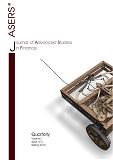WHAT DO WE KNOW ABOUT EXPOSURE AT DEFAULT ON CONTINGENT CREDIT LINES? - A SURVEY OF THE LITERATURE, EMPIRICAL ANALYSIS AND MODELS
WHAT DO WE KNOW ABOUT EXPOSURE AT DEFAULT ON CONTINGENT CREDIT LINES? - A SURVEY OF THE LITERATURE, EMPIRICAL ANALYSIS AND MODELS
Author(s): Pinaki Bag, Michael JacobsSubject(s): Essay|Book Review |Scientific Life
Published by: ASERS Publishing
Keywords: exposure at default; recoveries; default risk; bankruptcy; credit risk; Basel II
Summary/Abstract: Exposure at Default (EAD) quantification for the large exposures to contingent credit lines (CCLs) is a critical for models of credit risk amongst financial institutions. This includes expected loss calculations for loan provisions, economic credit capital as well as regulatory capital under the Basel II advanced Internal Ratings Based (IRB) framework. However, banks struggle in quantifying EAD due to limited empirical evidence and industry benchmarks, unavailable or inconsistent internal data and paucity of practical models. This study contributes to this modeling effort by surveying the existing literature and consolidating the empirical evidence on EAD. We consider recent extensions of prior empirical work that considers alternative determinants and measures of EAD risk in addition to the traditional approaches, including regression models and actuarial based models of EAD. We illustrate these new EAD paradigms through an empirical investigation using a sample of Moody’s rated defaulted firms, first the construction of a predictive econometric model in the generalized linear model class, followed by the calibration of an EAD model similar to basic CreditRisk+ type using Fast Fourrier transforms to convolute portfolio segments.
Journal: Journal of Advanced Studies in Finance (JASF)
- Issue Year: II/2011
- Issue No: 03
- Page Range: 26-46
- Page Count: 21
- Language: English
- Content File-PDF

